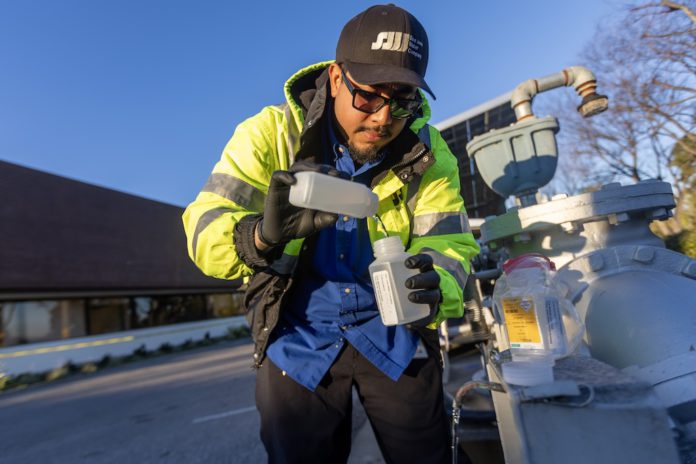Emerging contaminants, also known as “contaminants of emerging concern,” are substances in the environment that may be detrimental to wildlife and/or human health.
Some emerging contaminants are chemicals and compounds entering bodies of water like lakes and rivers, which are identified, tracked, studied, and ultimately regulated by agencies such as the US Geological Survey, the Environmental Protection Agency, and the California State Water Resources Control Board.
And thanks to improved capabilities, some of these emerging contaminants are also showing up in drinking water.
That sad fact has been making headlines lately — and understandably so. It’s unsettling to hear that man-made chemicals like perfluorooctane sulfonate (PFOS) have been detected in rainwater across the globe. Such reports raise valid questions about what’s in our drinking water and what that means for our health.
Emerging Contaminant Challenges
Emerging contaminants can come from a lot of places: firefighting foam, nonstick pans, lawn chemicals, even the disinfection process itself. Some classes of chemical contaminants, like per- and polyfluoroalkyl substances (PFAS), are manufactured and stick around in the environment far longer than anyone expected — giving rise to the term “forever chemicals.” Others, such as hexavalent chromium, can be industrial byproducts, but can also show up naturally in groundwater as the result of erosion. And then there are the ones we’re just beginning to understand, like microplastics or new disinfection byproducts formed during routine microbial treatment.
Water quality challenges aren’t new, but science keeps getting better at spotting them. And the water utilities that deliver drinking water to communities must use that science to meet those challenges. This means investing in research, expanding monitoring, and building treatment systems designed for what’s coming, not just what’s already regulated.
Combating Emerging Contaminants
So what can water utilities do about emerging contaminants? Compounds like PFAS are created with some of the strongest bonds in chemistry and they don’t break down easily. At present, PFAS filtration is an extremely expensive endeavor and there are only three effective treatment processes available to utilities: granular activated carbon (GAC), ion exchange, and high-pressure membrane systems.
- GAC material has a lot of surface area and many types of PFAS stick to it, GAC treatment processes typically use large filtration bed installations to pass water over this highly porous material to trap contaminants.
- Ion exchange PFAS filtration systems are generally more compact and use a hydrogel resin, which essentially works like a magnet, pulling PFAS molecules out of the water at the molecular level.
- And high pressure membrane systems use reverse osmosis and/or nanofiltration technology that allows water molecules to pass through specialized membranes, but captures larger molecules like PFAS.
Each of the processes come with benefits and drawbacks, as well as differences in filtration efficacy under particular circumstances and huge variance in infrastructure and operating cost. Emerging contaminant treatment investment and implementation at utilities across the country are also highly influenced by regulatory requirements and policy shifts.
Local Approach
I can’t speak for every water utility, but at San Jose Water, we’re not waiting for regulations to kick in. On PFAS, we’ve already piloted ion exchange systems at several groundwater stations and are actively building out full-scale treatment. We’re also continuing to evaluate other filtration options like activated carbon and new adsorbents to match the right technology to each water source.
On microplastics, we’ve teamed up with Rutgers University and the Water Research Foundation to study where these particles come from, how they behave in drinking water, and how best to remove them. These partnerships help build the scientific foundation that utilities across the country will eventually rely on.
Of course, context matters. Today’s lab tools can detect substances in parts per trillion. That’s like finding a single drop of water in an Olympic-sized swimming pool. Just because something shows up on a test doesn’t always mean it poses a health risk. But we don’t ignore it either. Our job is to stay ahead of science, even when the health effects aren’t fully understood yet.
Drinking water is one of the most regulated resources in the country. But San Jose Water goes above and beyond those standards. We run thousands of tests each year, continuously monitor our system, and invest in technology that helps us adapt to new challenges. We also work closely with regulators, researchers, and other utilities to share knowledge and shape smart policies.
Here’s the bottom line: water quality isn’t static, and neither are we. We treat every emerging issue as a chance to learn, improve, and lead. Not just because we have to, but because it’s the right thing to do. Delivering safe, high-quality water isn’t just our job. It’s our responsibility.
And when the headlines raise tough questions, you can count on us to have real answers.
Suzanne DeLorenzo is the director of water quality at San Jose Water, the regulated private utility that supplies most of Los Gatos with drinking water.










